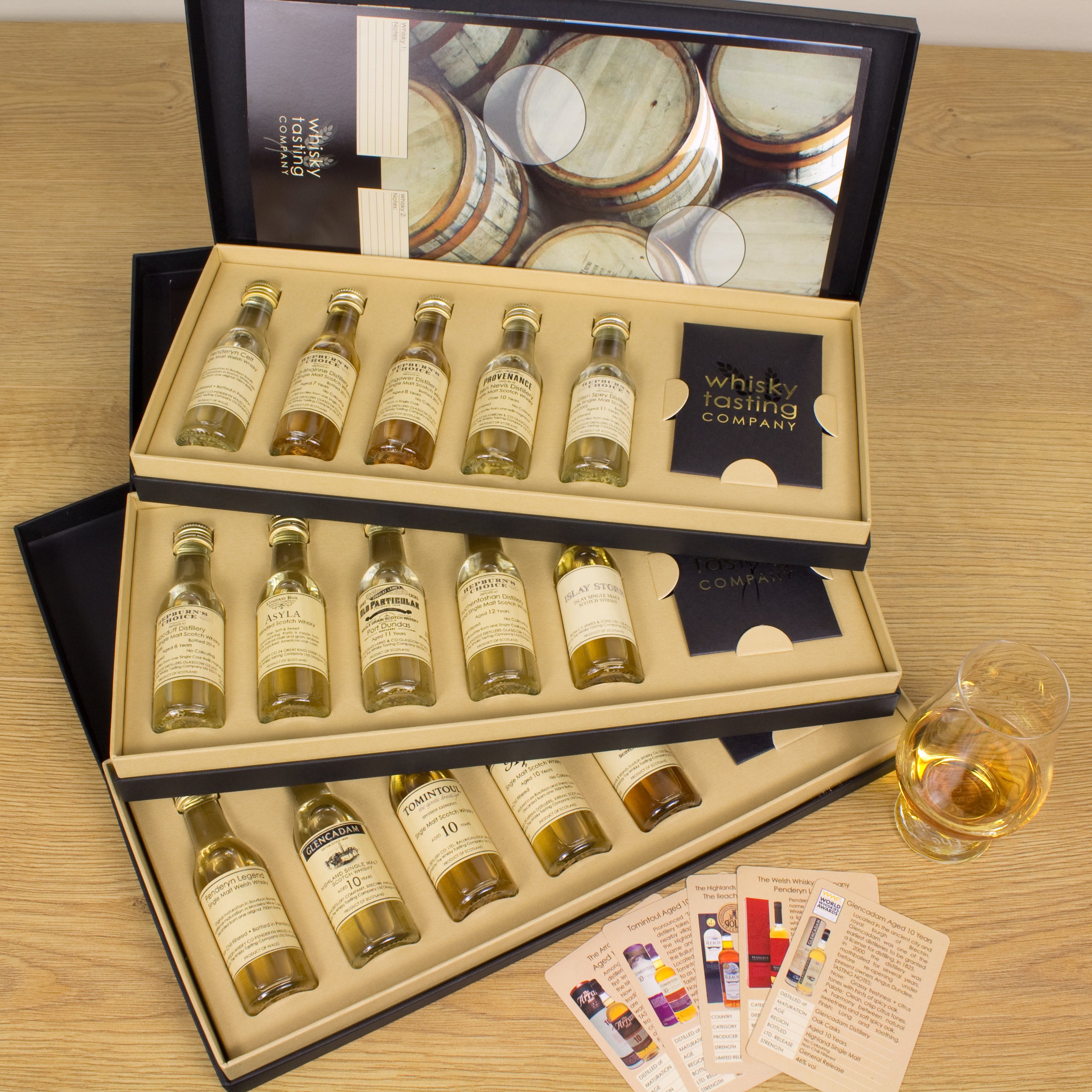What is chill-filtered whisky, and is it good?
If you’ve been in the whisky community for a while, then you may have heard the term ‘chill-filtered whisky’ floating around, not quite understanding what it means.
For those who are often engaging in whisky discussions or debates online, you may have even seen a few heated takes on this subject and witnessed its ability to rile people up.
Why? Many whisky fanatics think that chill-filtered whisky is inferior, as it takes away from the whisky's original flavour. But is this true? And what does chill-filtration actually involve to cause this amount of concern in the whisky community?
Today, Whisky Tasting Company will be answering all of your questions and settling the debate once and for all: Is chill-filtered whisky good?
Are you looking to make your nights that much sweeter? Our whisky tasting sets are perfect for getting cosy by the fire and sampling some delicious whiskies. Or, you can pass the experience on to your loved one as the perfect gift.
What is chill-filtered whisky?

Chill-filtered whisky, at its simplest, involves cooling the whisky down to a low temperature (usually between -10 and 4°C) and then passing it through fine filters to remove certain compounds, such as fatty acids, esters, and proteins.
Why do this? The simple answer is to remove cloudiness from the bottle. When whisky is bottled at a lower strength, typically below 46% ABV, the fatty acids, proteins, and natural oils can cause the whisky to become cloudy when chilled or when water or ice is added.
This is because these compounds change on a molecular level when they’re diluted or exposed to new temperatures. During chill filtering, the temperature of the whisky is deliberately lowered to cause the compounds to clump together.
Once they’ve formed tiny particles, the whisky is passed through a series of cellulose or metal filters to trap the compounds and remove them from the liquid.
While this haze is harmless, some people prefer to remove it so the whisky appears more ‘clean’ or appealing. That’s why many distillers opt to chill-filter their whisky so that they can achieve the crystal clear dram most customers desire.
Does chill-filtration impact flavour?
This is the burning question that keeps many whisky enthusiasts away from chill-filtered whisky.
Since we’re essentially messing with the natural state of the whisky, it’s only natural to wonder if the flavour is affected. Technically, chill filtration removes compounds that can contribute to texture and subtle aromas, which some critics argue makes it feel a little lighter or less oily.
Others suggest that trace flavour notes can be muted in the process, especially those associated with cask influence or a whisky’s mouthfeel. However, many experts have pointed out that the difference between chill-filtered and non-chill-filtered whisky is very subtle in terms of taste.
Whisky flavour is influenced by several factors, from the cask type to the grains and yeast used, distillation method, etc. Therefore, chill filtration only plays one small part, and it affects the appearance more than anything.
So, does it really matter in the end? If you favour whiskies with more texture or depth, then you may want to stick to your non-chill-filtered bottles. However, those who love a crystal clear dram will enjoy a chill-filtered whisky.
How to tell if a whisky is chill-filtered
So, how do we tell whether a whisky is chill-filtered or not?
Most bottles will have a label that states ‘non-chill filtered’ to appeal to those who love a whisky untouched. In fact, you’ll often see it on single malt Scotch bottled at 46% ABV or higher.
Why? Whisky that is 46% ABV or above doesn’t need to be chill-filtered, as the extra alcohol keeps those compounds dissolved and prevents haze from forming. That’s why you’ll see many high-strength bottles labelled ‘non-chill-filtered’.
If a bottle doesn’t disclose filtration, you can reasonably assume that it has undergone chill filtration. If you're someone who loves to conduct your own experiments from home, take your whisky and pour some into a glass with a splash of cold water.
Then, place it in the freezer for a few hours. If the whisky turns cloudy or hazy, then it hasn’t been chill-filtered, since the compounds are still present.
So, is chill-filtered whisky bad?
All in all, chill-filtered whisky doesn’t impact the flavour or mouthfeel of a whisky noticeably, so we feel that the debate about whether it’s bad or not can be put to rest.
For enthusiasts who love their whisky to be untouched after fermentation and many years of maturation, this may still put you off, as “non-chill filtered” is seen as a badge of quality, indicating that nothing has been removed from the whisky between cask and bottle.
That’s why brands such as Bunnahabhain have gained praise for shifting away from chill filtration, aligning with consumer demand for “natural” whiskies. However, for distillers and sellers, the chill filtration process just ensures that the whisky looks ‘attractive enough’ for the shelves.
Ultimately, whether chill-filtered whisky is seen as bad or not comes down to each individual's stance on the matter and how much they care about the appearance of their dram.
Sample some whiskies with our whisky tasting sets
At the Whisky Tasting Company, we’re a big advocate for expanding your palate and taste testing your whiskies before you invest in a big bottle.
You never know whether you’ll like what’s in the bottle, so it’s always good to taste it first so you can make an informed decision. Plus, who doesn’t love to sample a few whiskies every now and then?
With our luxurious whisky-tasting sets, you can do just that! Sample some delicious whiskies from across the globe, or gift the experience to a loved one on their special day. We even offer whisky subscriptions to keep the celebrations going all year round.
A new set will be delivered right to your door every 3 months, alongside a beautiful tasting mat and informative tasting cards.





